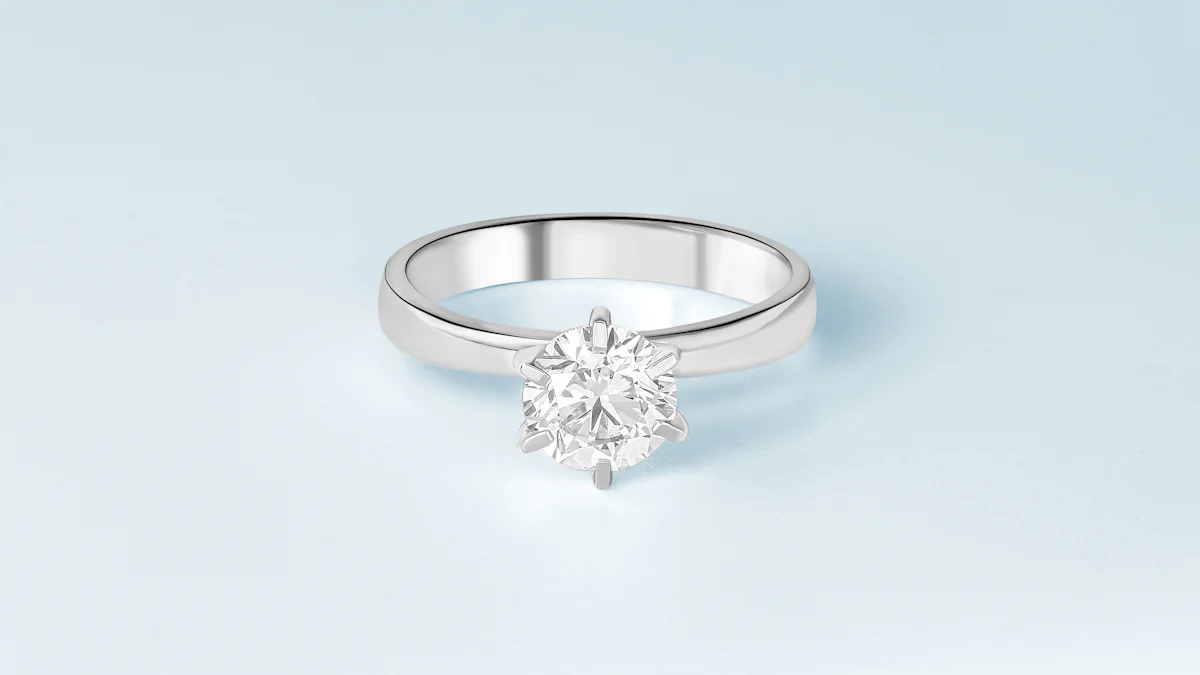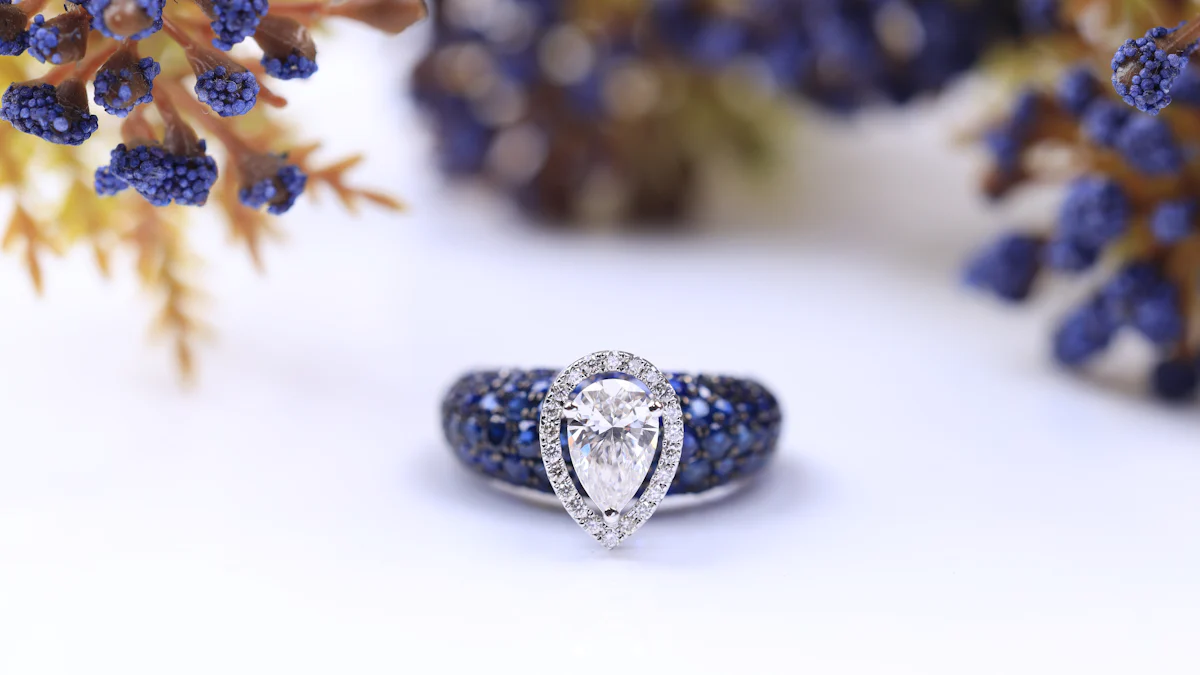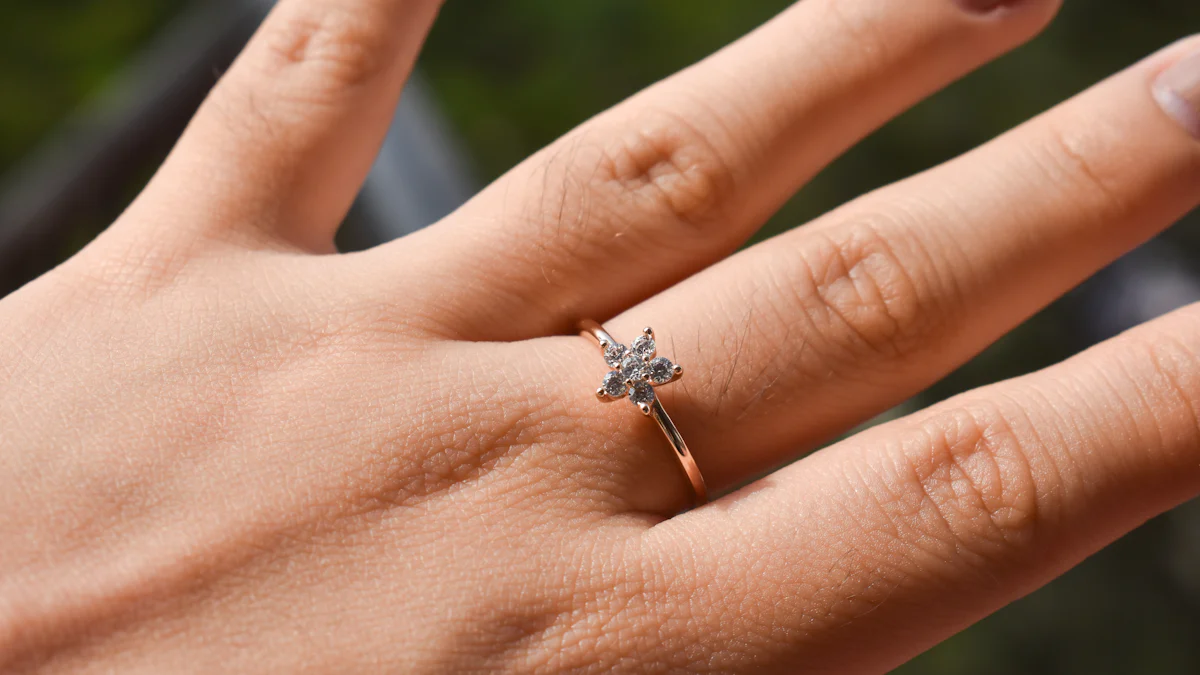Understanding 2-Carat Diamond Weight and Size

When you explore diamonds, understanding the difference between size and carat weight becomes crucial. The weight: 2 carats refers to the actual weight of the diamond, with a 2-carat diamond weighing approximately 400 milligrams. However, size relates to how large the diamond appears, which can vary based on its cut and shape. This distinction matters because even a small difference in carat weight can significantly impact the price. As a buyer, knowing these differences helps you make informed decisions and ensures you get the best value for your investment.
Key Takeaways
- Understand the difference between carat weight and diamond size; carat weight measures the actual weight, while size refers to how large the diamond appears.
- Prioritize cut quality when selecting a diamond, as a well-cut diamond enhances brilliance and can make it appear larger than its actual weight.
- Different diamond shapes affect perceived size; elongated shapes like oval or pear can appear larger than round diamonds of the same carat weight.
- Be aware of carat size cutoffs when budgeting for a diamond; buying just below these cutoffs can save you money without sacrificing appearance.
- Balance the 4Cs—carat, cut, color, and clarity—to ensure you get the best value for your investment in a 2-carat diamond.
- Evaluate diamonds carefully by inspecting cut symmetry, color against a white background, and clarity using a jeweler's loupe to ensure you choose a stunning piece.
The Difference Between Diamond Size and Carat Weight

Understanding the distinction between diamond size and carat weight is essential when selecting a diamond. While both terms often get used interchangeably, they refer to different aspects of a diamond.
Defining Carat Weight
Carat weight measures how much a diamond weighs. One carat equals 200 milligrams, so a diamond with a weight: 2 carats weighs 400 milligrams. This measurement is a standard unit in the diamond industry and helps determine the diamond's value. As the carat weight increases, the diamond becomes rarer and more valuable. However, carat weight does not directly indicate the diamond's size or how it will appear on your finger.
Understanding Diamond Size
Diamond size refers to how large the diamond looks when viewed from above. This perception can vary significantly based on the diamond's cut and shape.
How Cut Affects Size Perception
The cut of a diamond plays a crucial role in its appearance. A well-cut diamond reflects light beautifully, making it appear larger than its actual carat weight might suggest. Conversely, a poorly cut diamond may look smaller, even if it has a higher carat weight. The cut quality affects how light travels through the diamond, influencing its brilliance and perceived size.
The Role of Shape in Size Perception
The shape of a diamond also impacts how large it appears. Different shapes, such as round, oval, or pear, can make a diamond look bigger or smaller. For instance, an oval cut may seem larger than a round cut of the same carat weight due to its elongated shape. Understanding these nuances helps you choose a diamond that meets your aesthetic preferences while maximizing its visual impact.
How Cut Proportions Affect Perceived Size
The Importance of Cut Quality
When you choose a diamond, the cut quality plays a crucial role in its appearance. A well-cut diamond reflects light beautifully, enhancing its sparkle and making it appear larger. This brilliance results from precise angles and proportions that allow light to enter and reflect optimally. In contrast, a poorly cut diamond may look dull and smaller, even if it has a higher carat weight. The cut quality significantly impacts how large a diamond appears compared to its actual weight.
Examples of Cut Proportions and Their Impact
Different cut proportions can dramatically alter a diamond's perceived size. Here are some examples:
-
Shallow Cuts: Diamonds with shallow cuts may appear larger from above. However, they often lack brilliance because light escapes from the bottom rather than reflecting back to the viewer's eye.
-
Deep Cuts: Deeply cut diamonds might look smaller from above. They can also appear darker as light gets trapped inside, reducing their sparkle.
-
Ideal Cuts: These diamonds balance depth and table size perfectly. They maximize light reflection, enhancing both brilliance and perceived size.
Understanding these cut proportions helps you select a diamond that not only meets your aesthetic preferences but also maximizes its visual impact. By focusing on cut quality, you ensure that your diamond looks as stunning as possible, regardless of its carat weight.
Variability of Size Perception Among Different Diamond Shapes

Round vs. Fancy Shapes
When you choose a diamond, the shape plays a significant role in how large it appears. Round diamonds, known for their classic appeal, often seem smaller compared to fancy shapes of the same carat weight. This is because round diamonds have a symmetrical design that evenly distributes their weight. In contrast, fancy shapes like pear or oval can appear larger due to their elongated forms. These shapes draw the eye along their length, creating an illusion of greater size.
Scientific Research Findings:
- Elongated diamond shapes like pear or oval may appear larger than round brilliant diamonds, even when they are the same carat weight.
Understanding these differences helps you select a diamond that aligns with your visual preferences. If you desire a diamond that looks larger, consider opting for a fancy shape.
Popular Shapes and Their Size Perception
Different diamond shapes offer unique visual experiences. Here’s a look at some popular shapes and how they affect size perception:
-
Oval: This shape elongates the finger and appears larger than a round diamond of the same carat weight. Its elongated form maximizes surface area, enhancing its visual size.
-
Pear: Combining the round and marquise shapes, the pear shape offers a teardrop appearance. It often looks larger due to its length and pointed end.
-
Marquise: With its football-like shape, the marquise diamond creates an illusion of length, making it appear bigger than its actual carat weight.
-
Emerald: Known for its rectangular facets, the emerald shape emphasizes clarity over brilliance. It may not appear as large as other shapes but offers a sophisticated look.
-
Cushion: This shape combines a square cut with rounded corners, resembling a pillow. It may not appear as large as elongated shapes but offers a classic and elegant appearance.
By understanding how different shapes influence size perception, you can make informed decisions that align with your aesthetic desires. Whether you prefer the timeless elegance of a round diamond or the bold statement of a marquise, knowing these nuances ensures you choose a diamond that meets your expectations.
The Relationship Between Carat Weight and Price
When you consider purchasing a diamond, understanding how carat weight influences price is essential. Carat weight serves as a primary factor in determining a diamond's cost. As the weight increases, so does the price, often exponentially. This is particularly true at specific carat values known as "magic numbers," such as 1.00 carats or 1.50 carats. These thresholds can cause significant jumps in price per carat, making even small differences in weight impactful on your budget.
Carat Weight as a Pricing Factor
Carat weight directly affects the price of a diamond. Larger diamonds are rarer, which makes them more valuable. For instance, a diamond weighing 2 carats will generally cost more than two 1-carat diamonds of similar quality. This is because larger diamonds are less common and more desirable. However, it's important to remember that carat weight is not the sole determinant of price. Other factors like cut, color, and clarity also play crucial roles in a diamond's overall value.
The Influence of Cut on Price and Appearance
The cut of a diamond significantly impacts both its appearance and price. A well-cut diamond can enhance its beauty, making it appear more brilliant and larger than its actual weight might suggest. This quality can sometimes make a smaller, well-cut diamond more valuable than a larger, poorly cut one. The cut quality affects how light reflects within the diamond, influencing its sparkle and perceived size. Therefore, when evaluating diamonds, you should consider the cut alongside carat weight to ensure you get the best value for your investment.
"Diamond cutters often prioritize carat weight over cut quality to achieve economically sound carat weights, leading to sacrifices in beauty."
Typical Carat Size Cutoff Weights and Budget Considerations
When you plan to buy a diamond, understanding typical carat size cutoff weights can help you make informed decisions. These cutoffs often represent standard weight categories that influence pricing. For instance, common cutoff weights include 0.50 ct., 0.75 ct., 0.90 ct., 1.00 ct., 1.50 ct., and 2.00 ct. Buying just below these cutoffs can sometimes offer savings without a noticeable difference in appearance. This strategy allows you to maximize value while staying within budget.
Understanding Carat Cutoffs
Carat cutoffs serve as benchmarks in the diamond industry. They often dictate price jumps because diamonds at these weights are more desirable. For example, a diamond weighing just under 2 carats might cost significantly less than one that reaches the full weight: 2 carats. This is due to the rarity and demand associated with larger stones. By understanding these cutoffs, you can strategically choose a diamond that offers both beauty and value.
Budgeting for a 2-Carat Diamond
Purchasing a diamond with a weight: 2 carats requires careful budgeting. Prices for these diamonds vary widely, ranging from $5,000 to over $60,000. Factors such as shape, cut quality, and clarity greatly influence the cost. To get the most for your money, prioritize cut quality. A well-cut diamond enhances sparkle and brilliance, making it appear more impressive. Consider different settings like solitaire or halo to further enhance the diamond's appearance. By focusing on quality and strategic choices, you can find a stunning 2-carat diamond that fits your budget.
Practical Tips for Buying a 2-Carat Diamond
When you decide to purchase a diamond with a weight: 2 carats, understanding how to balance the 4Cs—carat, cut, color, and clarity—becomes essential. These factors collectively determine the diamond's overall appearance and value. By focusing on these aspects, you can ensure that you make a wise investment.
Balancing the 4Cs for Best Value
To get the best value for your diamond, you need to carefully consider each of the 4Cs:
-
Carat: While a weight: 2 carats diamond is impressive, remember that size isn't everything. Consider how the other Cs affect the diamond's beauty and value.
-
Cut: The cut significantly influences a diamond's sparkle. A well-cut diamond reflects light beautifully, enhancing its brilliance. Prioritize cut quality to maximize the diamond's visual appeal.
-
Color: Diamonds range from colorless to light yellow. Aim for a balance between color and price. Near-colorless diamonds often offer the best value, as they appear colorless to the untrained eye but cost less than truly colorless stones.
-
Clarity: Clarity refers to the presence of internal or external flaws. Choose a diamond with no visible inclusions to the naked eye. This ensures that the diamond looks flawless without paying for higher clarity grades that may not be noticeable.
Expert Testimony: RockHer, a renowned expert in diamonds, advises that "balancing the 4Cs is crucial for maximizing the value of a 2-carat diamond. Prioritizing cut quality can enhance the diamond's brilliance and perceived size."
Tips for Evaluating Cut, Color, and Clarity
When evaluating a diamond, focus on these practical tips to ensure you select the best option:
-
Cut Evaluation: Examine the diamond's symmetry and polish. A well-cut diamond will have a symmetrical shape and a polished surface that reflects light evenly. Look for diamonds graded as "Excellent" or "Very Good" for optimal brilliance.
-
Color Assessment: Use a white background to assess the diamond's color. Compare it to a color grading scale to determine its hue. Remember, diamonds with slight color variations can still appear stunning when set in jewelry.
-
Clarity Inspection: Use a jeweler's loupe to inspect the diamond for inclusions or blemishes. Focus on finding a diamond with no visible flaws to the naked eye, as these will not affect the diamond's beauty.
By following these tips, you can confidently choose a diamond that meets your aesthetic preferences and budget. Understanding the nuances of the 4Cs ensures that you make an informed decision, resulting in a beautiful and valuable diamond purchase.
Understanding the nuances of diamond size, weight, and value is crucial when selecting a 2-carat diamond. A larger carat weight doesn't always equate to better value. You must consider all 4Cs—cut, color, clarity, and carat—to find a diamond that truly stands out. A well-balanced diamond offers both beauty and value. Remember, a diamond's face-up size significantly impacts its brilliance. Prioritize cut quality to enhance sparkle and perceived size. By balancing these factors, you ensure a wise investment in a stunning diamond that meets your expectations.
FAQ
What is the difference between diamond size and carat weight?
Diamond size refers to how large the diamond appears when viewed from above, while carat weight measures the diamond's actual weight. A 2-carat diamond weighs approximately 400 milligrams. However, its size can vary based on its cut and shape. Understanding this distinction helps you make informed decisions when purchasing a diamond.
How does the cut of a diamond affect its appearance?
The cut of a diamond significantly influences its sparkle and perceived size. A well-cut diamond reflects light beautifully, enhancing its brilliance and making it appear larger. Conversely, a poorly cut diamond may look smaller and less vibrant, even if it has a higher carat weight. Prioritizing cut quality ensures your diamond looks stunning.
Why do different diamond shapes appear larger or smaller?
Different diamond shapes affect how large they appear due to their unique forms. For example, elongated shapes like oval or pear can seem larger than round diamonds of the same carat weight. These shapes draw the eye along their length, creating an illusion of greater size. Understanding these nuances helps you choose a diamond that meets your aesthetic preferences.
How does carat weight influence the price of a diamond?
Carat weight serves as a primary factor in determining a diamond's cost. Larger diamonds are rarer, making them more valuable. As the weight increases, so does the price, often exponentially. However, carat weight is not the sole determinant of price. Other factors like cut, color, and clarity also play crucial roles in a diamond's overall value.
What are typical carat size cutoff weights?
Carat size cutoffs represent standard weight categories that influence pricing. Common cutoffs include 0.50 ct., 0.75 ct., 0.90 ct., 1.00 ct., 1.50 ct., and 2.00 ct. Buying just below these cutoffs can sometimes offer savings without a noticeable difference in appearance. This strategy allows you to maximize value while staying within budget.
How can I balance the 4Cs for the best value?
To get the best value for your diamond, carefully consider each of the 4Cs: carat, cut, color, and clarity. While a 2-carat diamond is impressive, remember that size isn't everything. Prioritize cut quality to enhance sparkle and brilliance. Aim for a balance between color and price, and choose a diamond with no visible inclusions to the naked eye.
What should I look for when evaluating a diamond's cut, color, and clarity?
When evaluating a diamond, focus on symmetry and polish for cut quality. Use a white background to assess color and compare it to a grading scale. For clarity, use a jeweler's loupe to inspect for inclusions or blemishes. Choose a diamond with no visible flaws to ensure it looks flawless without paying for higher clarity grades.
Can I personalize my diamond jewelry?
Yes, many jewelers offer bespoke jewelry options, allowing you to personalize your diamond piece. You can choose the setting, metal, and additional gemstones to create a unique design that reflects your style. Personalization adds sentimental value to your jewelry, making it a cherished keepsake.
How does shipping work for diamond purchases?
When purchasing a diamond, inquire about the jeweler's shipping policies. Many offer secure and insured shipping options to ensure your diamond arrives safely. Some jewelers may also provide tracking information so you can monitor your package's progress. Understanding these details helps you plan your purchase with confidence.
Where can I find more information about diamond buying?
For more information about diamond buying, explore resources from reputable jewelers and industry experts. Websites like RockHer offer valuable insights into the 4Cs and provide guidance on selecting the perfect diamond. By educating yourself, you can make informed decisions and find a diamond that meets your expectations.
See Also
Exploring The Size Of A 2.25 Carat Diamond
Pricing For A 2 Carat Lab Grown Diamond
A Guide To Diamond Cuts For Engagement Rings

